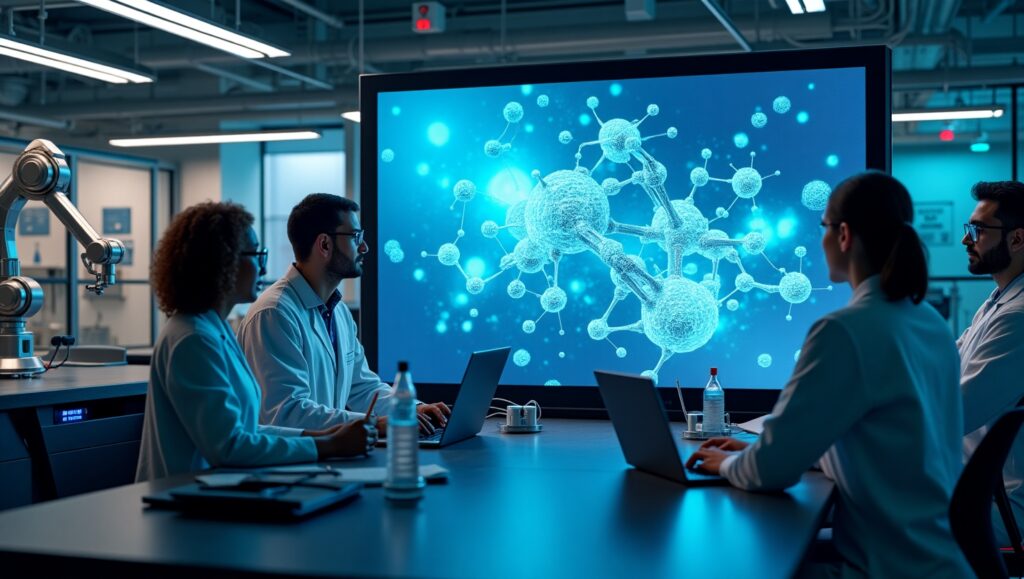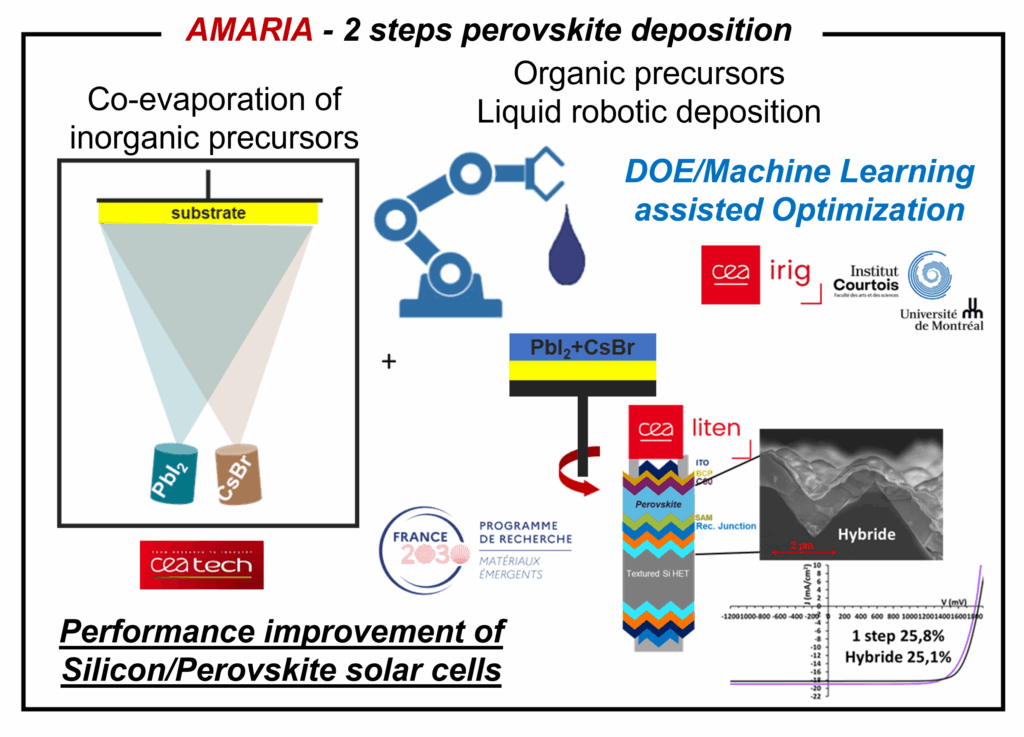
AMARIA
Collaboration with the institut Courtois – University of Montréal
AMARIA
Responsible : Cyril Aumaître
Although silicon cells are well established commercially, their efficiency limitations (20-25%) and high energy requirements limit opportunities for improvement. Recently, tandem cells combining silicon and a thin perovskite layer have demonstrated efficiencies exceeding 34%, but challenges persist in terms of deposition reproducibility and process industrialization.
To accelerate the development of this technology, the AMARIA project proposes a hybrid approach consisting of forming the perovskite layer in two stages: first, evaporation of the inorganic species, followed by liquid deposition of the organic cations. To accelerate the optimization of this process, AMARIA proposes the use of a deposition robot that guarantees process reproducibility and automated learning based on a combined design of experiments/artificial intelligence approach. The goal of AMARIA project is to create a standardized database for this hybrid process, integrating key parameters (composition, concentrations, additives, etc.) to improve cell performance and stability and lead to cells with high conversion efficiency.
This project benefits from training support from the PEPR DIADEM as well as support for high-throughput characterization of DIADEM platforms. This project is being carried out in collaboration with several partners, including CEA-IRIG (coordinated by C. Aumaître), CEA-DES (INES-S. Berson), CEA-Tech Bordeaux (Y. Gildirim), and the Courtois Institute in Canada (A. Laventure). This new collaboration aims to develop a more robust and efficient solar technology and should accelerate discoveries in the field of new energy production.
